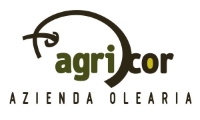Palmitic acid: this is one of the most common saturated fatty acids in animals and plants. The name derives from the fact that it is found in palm oil, but is also contained in butter, cheese, milk and meat. Panel test: this is a sensory analysis performed by a group of people who have particular sensory requirements, who evaluate the organoleptic characteristics of the olive oil. This assessment is fundamental in order to highlight defects and enhance the qualities of olive oil because these characteristics can not be discovered with chemical analysis. These analyses are at the discretion of the olive grower who intends to give additonal useful information about the product to the customers. These tests are generally made every year and for each lot.
Panel test: this is a sensory analysis performed by a group of people who have particular sensory requirements, who evaluate the organoleptic characteristics of the olive oil. This assessment is fundamental in order to highlight defects and enhance the qualities of olive oil because these characteristics can not be discovered with chemical analysis. These analyses are at the discretion of the olive grower who intends to give additonal useful information about the product to the customers. These tests are generally made every year and for each lot.
Peroxides: these are chemical compounds which contain the characteristic group consisting of two oxygen atoms. The number of peroxides indicates the degree of primary oxidation of the oil, hence its tendency to go rancid. According to the current legislation, the limit on the number of peroxides is 20, above which the oil is lampante . A value is good if below 10-12. The peroxides are odorless and tasteless, so they are not perceptible at an organoleptic level. However since they are very unstable, they decompose easily and give rise to the formation of aldehydes and ketones, which are responsible for the rancidity. A high number of peroxides shows that the irreversible oxidation process has already started. At the same time, a low number of peroxides is not necessarily linked to high quality, as the oxidation can be passed to the secondary phase, where the peroxides break down into aldehydes and ketones. It is therefore necessary to complete the analysis of the peroxides with a spectrophotometric examination and the organoleptic test.
Pesticides: these are substances or chemical products capable of controlling, limiting, repelling or destroying living organisms (micro-organisms, animals or plants) which are considered harmful. Debates have taken place (and continue to take place) at the European level concerning the harmful effects of pesticides on the environment and on health.
Phospholipids: these molecules are composed of a lipid region (insoluble in water but soluble in organic solvents) and a residue of orthophosphoric acid (in the phosphate group). They are important because ‘the hydrophobic tails (belonging to the atomic group, which does not tend to bind with the water), arrange themselves in a direction away from the water, while the phosphoric heads which are polar molecules, orient themselves towards the aqueous medium. In this way, a barrier is formed that separates the inside of the cell from the outside.
Polyphenols: these constitute a family of about 5000 organic molecules which are widely present in the plant kingdom. Polyphenols are natural antioxidants present in plants and may be useful in preventing the oxidation of lipoproteins and in “stopping” free radicals. Other positive effects have been verified such as cardiovascular effects, the slowing of diseases related to senescence and the stunting of tumor growth.
Pomace oil: the pomace is the solid residue that remains after the oil has been extracted. It is possible to extract residual oil from this. In fact, the pomace, depending on the type of extraction used in the mill, still contains from 3% to 6% of oil. Since this “raw pomace oil” is not edible, it undergoes a refining treatment and, with the addition of an unspecified percentage of virgin olive oil, it becomes edible and is called “olive-pomace oil”.
Pose: this is another common phrase that refers to a waste product created from a process (see sludge).
Pressing: operation of the mill that consists in crushing the olives on millstones or crushers in order to obtain the olive paste from which the olive oil will be extracted.
Production alternation: this is a typical phenomenon of plants (in this case, olive trees) that produce differently from one year to the next. This means that years of abundant production alternate with years of scarce production.
Production regulations: this is a series of rules and regulations that the breeder must observe in order to receive the European Community label of Dop or Igp (see here).
Proteins: they are among the most complex organic compounds and are the fundamental constituents of all animal and plant cells. Those present in olive oil are: alanine, arginine, glycine and leucine.
Pruning: this is used to maintain the correct relationship between branches and leaves so as to ensure correct lighting on the various parts of the foliage and to promote rejuvenation of the plant. These interventions are used to promote productivity and increase the annual development of the plant. in a balanced way.The type of cut also serves to give the tree a shape in relation to the way the harvest will be carried out.
